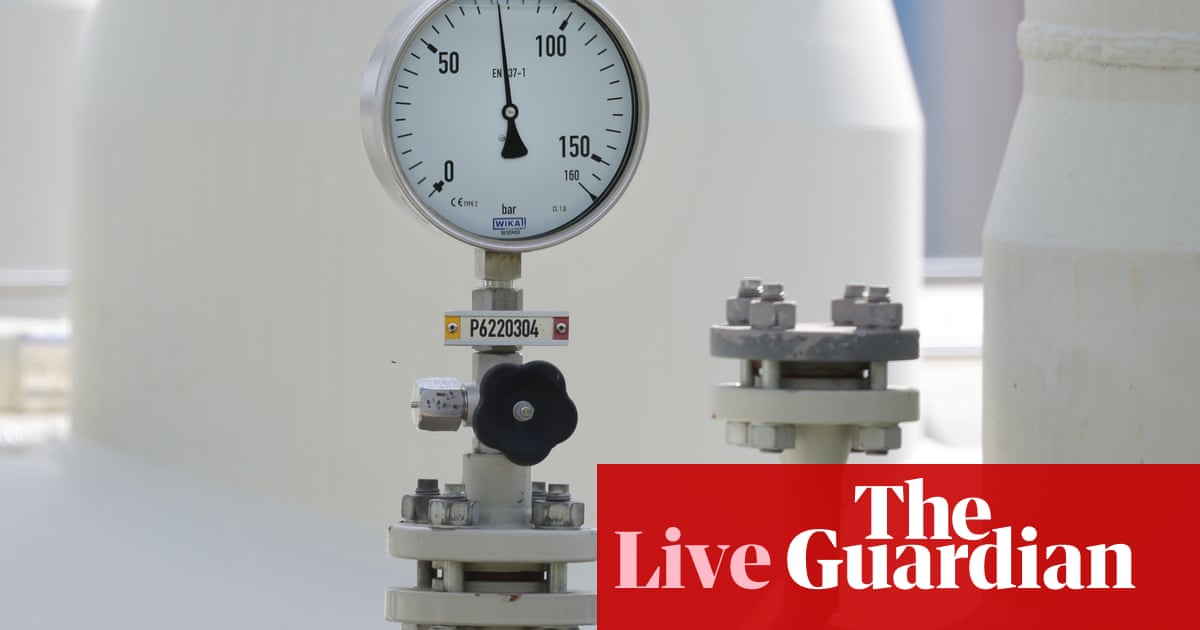We use some essential cookies to make this website work.
We’d like to set additional cookies to understand how you use GOV.UK, remember your settings and improve government services.
We also use cookies set by other sites to help us deliver content from their services.
You can change your cookie settings at any time.
Departments, agencies and public bodies
News stories, speeches, letters and notices
Detailed guidance, regulations and rules
Reports, analysis and official statistics
Consultations and strategy
Data, Freedom of Information releases and corporate reports
Updated 28 July 2022

© Crown copyright 2022
This publication is licensed under the terms of the Open Government Licence v3.0 except where otherwise stated. To view this licence, visit nationalarchives.gov.uk/doc/open-government-licence/version/3 or write to the Information Policy Team, The National Archives, Kew, London TW9 4DU, or email: psi@nationalarchives.gov.uk.
Where we have identified any third party copyright information you will need to obtain permission from the copyright holders concerned.
This publication is available at https://www.gov.uk/government/publications/heatwave-plan-for-england/supporting-vulnerable-people-before-and-during-a-heatwave-for-health-and-social-care-professionals
Severe heat is dangerous to everyone. During a heatwave, when temperatures remain abnormally high over more than a couple of days, it can prove fatal. Climate change means heatwaves are likely to become more common in England. In one hot spell in London in August 2003, deaths among people aged over 75 rose by 60%. This factsheet is part of a national programme to reduce the health risks by alerting people to the dangers and encouraging them to plan what to do in the event of a heatwave. Heatwaves can happen with little warning and illness and death can occur within the first couple of days, so it is best to make the following preparations before high temperatures are forecast and ideally these should be complete by the beginning of June.
You should be reading this, and are urged to act on it, if you work, either as a commissioner of health or social care services or as an emergency responder or a professional from health and social care services working in any setting, in the community, care home or in a hospital environment. It offers advice both on caring for people most at risk during a heatwave, and on organising others who provide care. Example advice cards can be found at the end of this leaflet.
There are certain factors that increase an individual’s risk during a heatwave. These include:
During severe hot weather, there is a risk of development of heat exhaustion, heatstroke and other heat-related illnesses including respiratory and heart problems. In a moderate heatwave, it is mainly the above high-risk groups that are affected.
However, during an extreme heatwave such as the one affecting France in 2003, fit and healthy people can also be affected.
The body normally cools itself using 4 mechanisms:
When the ambient temperature is higher than skin temperature, the only effective heat-loss mechanism is sweating. Therefore, any factor that reduces the effectiveness of sweating such as dehydration, lack of breeze, tight-fitting clothes or certain medications can cause the body to overheat. Additionally, thermoregulation, which is controlled by the hypothalamus, can be impaired in the elderly and the chronically ill, and potentially in those taking certain medications, rendering the body more vulnerable to overheating. Young children produce more metabolic heat, have a decreased ability to sweat and have core temperatures that rise faster during dehydration. Older people appear to be more vulnerable to heat possibly due to having fewer sweat glands, but also because of living alone and at risk of social isolation.
The main causes of illness and death during a heatwave are respiratory and cardiovascular diseases. A linear relationship between temperature and weekly mortality was observed in England in summer 2006, with an estimated 75 extra deaths per week for each degree of increase in temperature. Part of this rise in mortality may be attributable to air pollution, which makes respiratory symptoms worse. The other main contributor is the effect of heat on the cardiovascular system. To keep cool, large quantities of extra blood are circulated to the skin. This causes strain on the heart, which for elderly people and those with chronic health problems can be enough to precipitate a cardiac event.
Sweating and dehydration affect electrolyte balance. For people on medications that control electrolyte balance or cardiac function, this can also be a risk. Medicines that affect the ability to sweat, thermoregulation or electrolyte imbalance can make a person more vulnerable to the effects of heat. Such medicines include anticholinergics, vasoconstrictors, antihistamines, drugs that reduce renal function, diuretics, psychoactive drugs and antihypertensives.
Evidence also exists that links increased ambient temperatures and associated dehydration with an increase in bloodstream infections caused by Gram-negative bacteria, particularly Escherichia coli. The risk is greatest in individuals aged over 65, emphasising the importance of ensuring adequate fluid intake in older people during periods of raised temperatures to reduce the risk of infection.
The following heat-related illness information describes the effects of overheating on the body, which in the form of heatstroke can be fatal.
The main causes of illness and death during a heatwave are respiratory and cardiovascular diseases. Additionally, there are specific heat-related illnesses including:
heatstroke – can become a point of no return whereby the body’s thermoregulation mechanism fails – this leads to a medical emergency, with symptoms of:
People with long-term and severe illness are likely to be at particular risk, including the following conditions:
Heatwaves can happen suddenly, and rapid rises in temperature affect vulnerable people very rapidly. Make as much use as possible of existing care plans to assess which individuals are at particular risk, and to identify what extra help they might need.
Health and social care providers need to plan to ensure that care and support for people at risk can be accessed in the event of a heatwave. Anyone in a high-risk category who is living alone is likely to need at least daily contact, whether by care workers, volunteers, or informal carers. Older people with long-term or serious illness, mobility problems, or severe mental illness, those who are on certain medications, or those living in accommodation that is hard to keep cool, may need extra care and support.
If you are advising, visiting, supporting, or caring for someone in their own home, these are the steps that should be taken before the hot weather happens. Where possible, involve their family and any informal carers in these arrangements.
Check that:
Carry out the following:
Immediate, where required:
More routinely:
Where possible:
After taking the above steps:
As well as the specific symptoms of heat exhaustion and heatstroke, watch out for signs that could be attributed to other causes, such as:
If you suspect someone has heatstroke, call 999.
While waiting for the ambulance:
The following information describes the medications what are likely to provoke or increase the severity of a heatstroke. Those drugs are theoretically capable of increasing risk in susceptible individuals. It may be worth carefully reviewing the medication such individuals are taking and assessing the risks and benefits of any changes to their regime.
Diuretics, escpoecially loop diuretics.
Any drug that causes diarrhoea or vomiting (colchine, antibiotics, codeine).
NSAIDS, sulphonamides, indinavir, cyclosporin.
Lithium, digoxin, antiepiletics,
By central action:
By interfering with sweating:
By modifying basal metabolic rate:
By reducing arterial pressure:
Including those in section 4 (Central Nervous System) of the British National Formulary. Particularly 4.1 (Hypnotics and Anxiolytics) and 4.7 (Analgesics).
The full Heatwave Plan and accompanying documents outline the responsibilities of health and social care organisations at different stages during a heatwave.
NHS Choices can provide additional advice on heatstroke and other heat-related conditions. We have also recommended that patients and the public can phone NHS 111 or their GP if they are concerned about their health or others.
The heatwave alert levels will be triggered by temperature thresholds (see Annexe 1 of the Heatwave Plan) set according to regional variations. Therefore, the Met Office will be the first place where the alert level is available. The alert level will also subsequently be displayed on the Department of Health, UKHSA and NHS Choices websites.
If you would like more information about air pollution in the UK or health advice to those who may be particularly sensitive to air pollution, the Department for Environment, Food and Rural Affairs (Defra) provides regular updates on levels of particulate matters (PM10), sulphur dioxide, nitrogen dioxide, ozone and carbon monoxide in local areas.
Additional information on air quality can be found at BBC Weather.
Advice to those with respiratory problems is consistent with the advice to all others during a heatwave – to keep windows shaded and closed when outside temperatures are hotter during the daytime to reduce heat (and ozone) entering the home; and opening windows at night or when it is cooler outside, to aid cooling of their home.
Ozone is the main air pollutant that affects respiratory symptoms and has a diurnal variation, peaking during the hottest period of the day and dropping to very low levels at night. Other air pollutants tend to be at lower levels indoors, and therefore the other main advice to those with respiratory problems is to restrict going outside, especially during the hottest period of the day
Ten ways to minimize Ultraviolet Ray (UVR)-induced skin and eye damage:
The advice cards which follow should be read in conjunction with the main Heatwave plan for England.
The Heatwave plan describes the heatwave alert service which operates in England from 1 June to 15 September each year. During this period, the Met Office may forecast heatwaves, as defined by forecasts of day and night-time temperatures and their duration.
The heatwave alert service (also known as ‘heat-health watch’) comprises 5 main levels (Levels 0 to 4). Level 0 is year-round long-term planning, so that long-term actions are taken to reduce the harm to health of severe heat, when it occurs. Levels 1 to 3 are, based on threshold day and night-time temperatures as defined by the Met Office. These vary from region to region, but the average threshold temperature is 30ºC during the day and 15ºC overnight. Level 4 is a judgement at national level made because of a cross-government assessment of the weather conditions. Details of individual regional thresholds are given in Annexe 1 of the Heatwave plan.
Long-term planning includes year-round joint working to reduce the impact of climate change and ensure maximum adaptation to reduce harm from heatwaves. This involves influencing urban planning to keep housing, workplaces, transport systems and the built environment cool and energy efficient.
During the summer months, social and healthcare services need to ensure that awareness and background preparedness are maintained by implementing the measures set out in the Heatwave plan.
This is triggered as soon as the Met Office forecasts that there is a 60% chance of temperatures being high enough on at least 2 consecutive days to have significant effects on health. This will normally occur 2 to 2 days before the event is expected. As death rates rise soon after temperature increases, with many deaths occurring in the first 2 days, this is an important stage to ensure readiness and swift action to reduce harm from a potential heatwave.
This is triggered as soon as the Met Office confirms that threshold temperatures have been reached in any one region or more. This stage requires specific actions targeted at high-risk groups.
This is reached when a heatwave is so severe and/or prolonged that its effects extend outside health and social care. The decision to go to a Level 4 is made at national level and will be taken considering a cross-government assessment of the weather conditions, co-ordinated by the Civil Contingencies Secretariat (Cabinet Office).
To be used in conjunction with the guidance elsewhere in this factsheet and in the Heatwave Plan).
Also see Making the Case: the impact of heat on health – now and in the future for more detail.
Working with partner agencies, incorporate into JSNA’s/HWS’s long term plans to prepare and mitigate the impact of heatwaves, including:
Work with partner agencies, providers and businesses to coordinate heatwave plans, ensuring vulnerable and marginalised groups are appropriately supported.
Work with partners and staff on risk reduction awareness (for example, key public health messages), using a variety of methods to maximise dissemination
Ensure care homes and hospitals are aware of the heatwave plan and are engaged in preparing for heatwaves.
Continue to engage the community and voluntary sector to support communities to help those most at risk.
Ensure other institutional establishments (for example, prisons, schools) are aware of heatwave guidance.
Ensure organisers of large events take account of possible heat risks.
60% risk of heatwave in the next 2 to 3 days.
Communicate public media messages – especially to ‘hard to reach’, vulnerable groups.
Communicate alerts to staff and make sure that they are aware of heatwave plans.
Implement business continuity.
Increase advice to health and social care workers working in community, care homes and hospitals.
Temperature reached in one or more Met Office National Severe Weather Warning Service regions.
Media alerts about keeping cool.
Support organisations to reduce unnecessary travel.
Review safety of public events.
Mobilise community and voluntary support.
Central government will declare a Level 4 alert in the event of severe or prolonged heatwave affecting sectors other than health.
Emergency response – continue actions as per Level 3 unless advised to the contrary.
Central government will declare a Level 4 alert in the event of severe or prolonged heatwave affecting sectors other than health and if requiring coordinated multi-agency.
Over 75, female, living on own and isolated, severe physical or mental illness; urban areas, south‑facing top flat; alcohol and/or drug dependency, homeless, babies and young children, multiple medications and over-exertion
Over 75, female, frail, severe physical or mental illness; multiple medications; babies and young children (hospitals).
Because Level 2 is based on a prediction, there may be jumps between levels. Following Level 3, wait until temperatures cool to Level 1 before stopping Level 3 actions.
A decision to issue a Level 4 alert at national level will be taken in light of a cross-government assessment of the weather conditions, coordinated by the Civil Contingencies Secretariat
Don’t include personal or financial information like your National Insurance number or credit card details.
To help us improve GOV.UK, we’d like to know more about your visit today. We’ll send you a link to a feedback form. It will take only 2 minutes to fill in. Don’t worry we won’t send you spam or share your email address with anyone.



